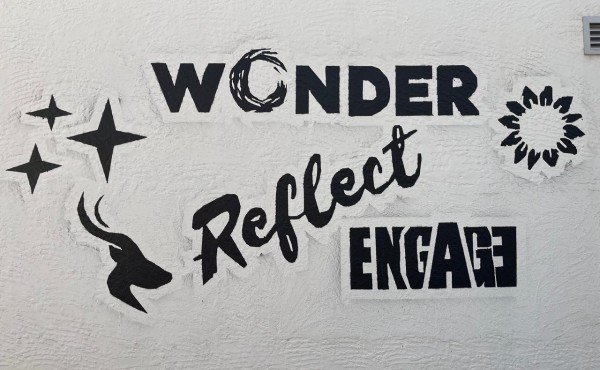MITRA – an interesting sounding name. But not one that you would expect for a school. One would probably respond “What?” to the question: Have you heard of Mitra? Well, the right response is “Who?”. Mitra — Sugata Mitra — is an Indian computer scientist and educational theorist best known for his “Hole in the Wall” experiment on education and literacy.
Mitra’s experiment struck a chord with Ms. Irene Porres: she observed how children, provided with the tools, learn and let their curiosity do the work. Irene is a member of the Work from the United States and had been a high school teacher in South Africa for several years. She took the initiative to address challenges she identified in the country’s education system. The inability of the learners to engage and to actually learn, either due to lack of enthusiasm, lack of capacity or poor teaching habits, baffled her at the time. She thus sought to question her own teaching practices, and it slowly became clear that the solution was not going to be another teacher training, developmental session, or coercion of her colleagues to engage with the pupils, but rather something more radical. So she left her job at the school and embarked on a journey to set up Mitra Academy in Johannesburg, South Africa.
South Africa is a complex society with many wonderful cultures and backgrounds, but there is a complicated history that has caused difficult dynamics, particularly in education. In terms of learning ability, reading comprehension, and mathematical ability, South Africa is like most of the world, where the more privileged demographic, normally exposed to greater opportunities of academic excellence, has an advantage over the less privileged.

So here we answer the question “What is Mitra?”. Mitra Academy provides a space where children from all backgrounds cultivate the love of learning, with teachers who have a deep sense for educating the whole person to awaken their curiosity. Mitra is about finding the effective group size for learning to take place and for friendships to form with each one being their “brother’s keeper”. Sugata Mitra, one of the inspirations behind the Academy, placed a computer in a hole in the wall of a slum in India and children were allowed to use it freely. The children learnt. This was the initiation of self-organized learning environments (SOLEs). In today’s learning environment, tech tools are a basic requirement and can enhance learning if used the right way.
Irene had a vision of what this school should aim to foster in children: how to wonder, reflect and engage. For this to work, there needed to be space to learn and to teach differently. The teachers also have to make a conscious effort to individualise learning and an assessment of each child being prepared for “what is out there”, not managing a herd of animals being prepared for the slaughter. With SOLEs, Mitra is actively working at tapping into the natural curiosity of children while providing guidance and facts that line the path with signposts of where they are headed. Each learner is assessed prior to admission to gauge the level they are at and discern the best level to place them in for each subject.
In her research prior to setting up Mitra, Irene found that an effective learning group size is 5 students, and an effective overall class size is up to a maximum of 20 students. With this kind of setup and the open plan physical setup that is Mitra, the groups are interdisciplinary and are also inter-age. This sets the stage for a SOLE initiative. The teacher plays the role of a guide and helps elaborate facts, ensuring there is no critical error, but also allowing for the exploration of alternatives necessary for problem-solving skills. If we are honest, the teams in our work environments are a reflection of SOLEs: inter-disciplinary and inter-age.
One of the volunteers at Mitra is a former high school student of Irene’s. She felt strongly that the general one-size-fits-all in a normal school and classroom setting does not work. This is especially relevant for today’s world as there is a need, at an early age, to develop critical thinking and the ability to question trends in the world. Space for the children to ask questions, make mistakes without getting punished, and being corrected and encouraged to try again, is essential. She also praised the concerted effort of the teaching and management team to encourage the children to make their own decisions, with the knowledge of the consequences, thereby teaching them to be responsible and accountable for their choices. There is, unfortunately, no remote control for teachers and parents alike, or an app for users to switch on critical thinking, problem solving, and consequential reflection. It needs to be modelled.

Through God’s plans, He is always teaching us the essence of abandonment and that often we sow but others reap. So, 7 years on, Irene needs to take up a different role back home in the USA, and Franci takes over to continue steering Mitra Academy. A chance to educate in freedom, “churning” out: young adults who are knowledgeable, responsible, and have the confidence to approach situations in life in an unconventional manner; and teachers who internalise their role as coach and guide to the learners awakening their sense of wonder, reflection, and ability to engage!
Kudos Irene and all the best Franci!
Explore Mitra Academy, Johannesburg, South Africa: https://www.mitra.academy/
